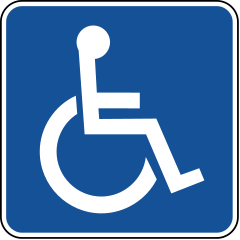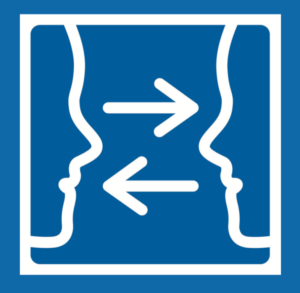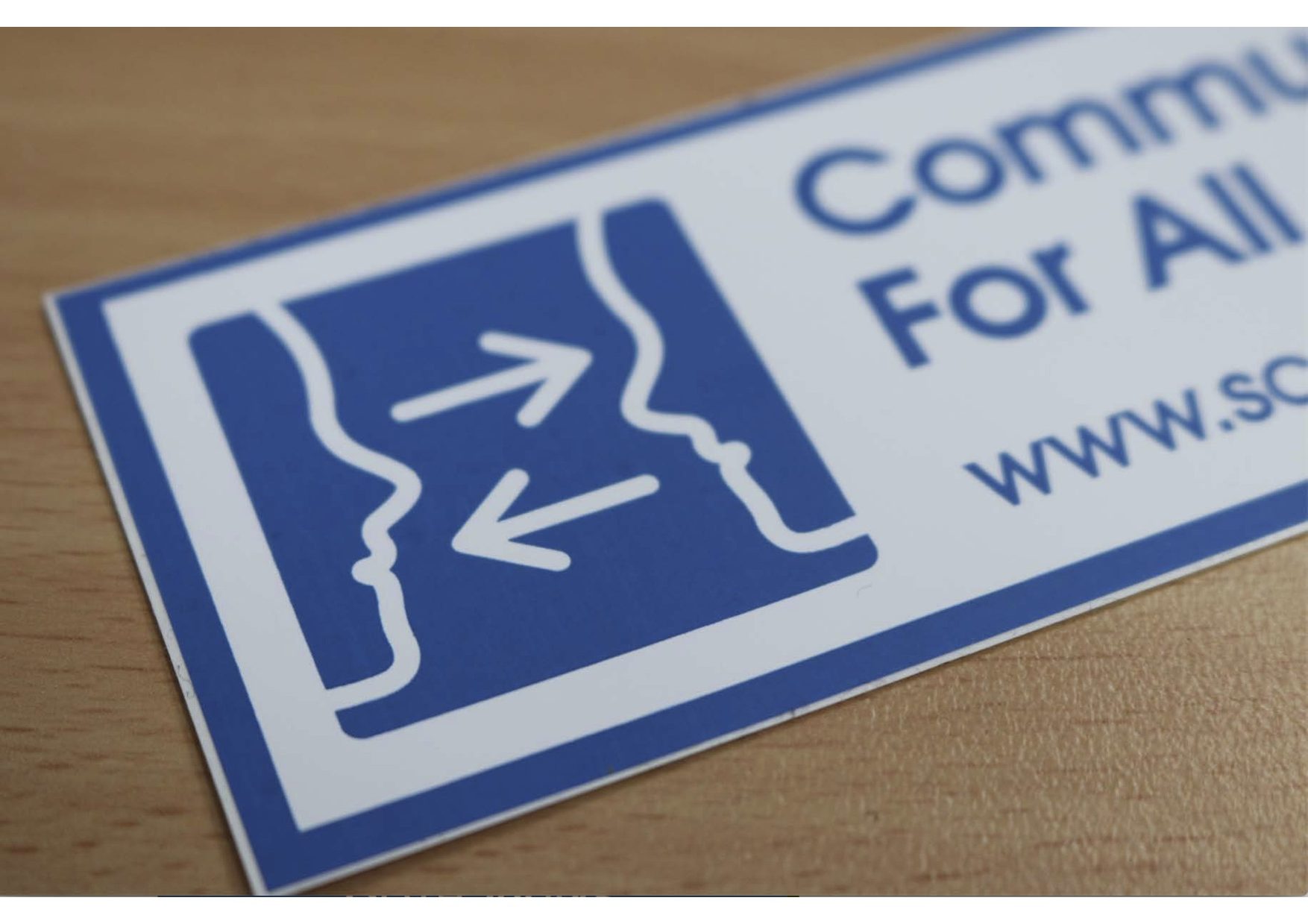Wheelchair ramps. Disabled parking. Lifts at train stations. All ways that communities support people with physical disabilities to get on with their lives and to contribute to society. Things that help people with physical disabilities go places and do stuff most of us take for granted.
But what about communication access?
Huh?
Almost everyone knows what this sign means:

Source: Wikimedia Commons.
But what about this one?

Source: Scope Victoria.
It’s called the Communication Access Symbol.
Communication Access?
To live our lives well, we need to communicate with others. We need to understand what others say and write. We need to get our messages – thoughts, feelings, needs – across to others.
Some people have problems getting and giving messages (or both).
Think about people with:
- communication disorders like aphasia or developmental language disorders;
- speech sound disorders, childhood apraxia of speech or motor speech problems, like dysarthria, which make it hard for people to understand their speech;
- hearing problems;
- vision problems;
- literacy problems;
- English as their second language;
- physical/sensory issues;
- intellectual/cognitive issues, e.g. people with a life-long disability or people with an acquired brain injury; and
- neurogenic diseases or disorders, e.g. Parkinson’s Disease.
These are examples of people who might have communication support needs. They might need help to get or receive messages (or both).
Communication problems often invisible, but common
Compared to some physical disabilities, communication disabilities can be hard to spot. But consider this:
- Between 1-2% of us have a communication disability (Law et al., 2007). Speech Pathology Australia thinks that the true number might be closer to 5%, or 1 in 20.
- Up to 20% of us have some difficulties with communication compared to the majority (Law et al., 2007).
- 44% of Australians have reading problems that prevent them from reading stuff required to meet daily needs (ABS, 2012).
How do people with communication problems help themselves?
Lots of ways! Here are just a few examples:
- Speech-language or voice therapy from a speech pathologist.
- Manual signing, e.g. Key Word Sign or Auslan.
- Augmentative communication aids, including “low tech” things like picture communication boards, or higher tech things like iPad apps (e.g. Proloquo2Go).
- Visual support.
- Audio support.
- Partner/carer training and/or supported conversational partner training.
How can communities help people with communication needs?
Our aim as a community should be to help people with communication problems to communicate effectively in unfamiliar, mainstream settings and with the greatest level of independence possible (Solarsh & Johnson, 2017).
Here are just a few suggested ways we can pitch in and help:
-
- Watch and learn: Check out this short video by Scope.
- Share what you’ve learned with others: I had no idea about how common communication disorders were until I started studying speech pathology. A little bit of knowledge changed my attitudes, re-set my priorities and, over time, affected my values. I now know that communication is a human right, and that each of us is responsible for improving communication access for everyone.
- Promote Communication Access Cards. Help people with communication needs to tell others how they prefer to communicate. Scope has wonderful free templates you can download via here.
- When writing for the public, use these principles of writing.
- Use Plain English. Avoid pointless, long words. Work with Plain English experts to make forms, websites, etc. more accessible.
- Use pictures and symbols to help people who can’t read well and/or are learning to read English.
- Follow the example of business, community and other organisations that have been named as Communication Accessible Places and have been awarded the Communication Access Symbol by Scope. There are now over 160 such organisations and you can access the directory here. Many of these organisations are small. Inspiring stuff!
- Advocate for better access. When you encounter a hostile receptionist, an impenetrable website, or see a terrible form, sign or other document, call it out and advocate for change. For example, I saw this sign on the Sydney Light Rail:

Bottom line
Communication is a human right. It’s essential for taking part in society and living a fulfilling life.
Some people need help with communication. Outstanding organisations like Scope, are working hard with businesses and community groups to help people with communication needs. But we can all do things to make it easier for people with communication needs to communicate more effectively.
Related articles:
- How to write for people with acquired language problems (an example)
- Speech Talk 5: Alan Siegal – plain English – striving for simplicity
- Want your writing to sound smarter? Get rid of long, pointless words!
- Alternative communication options for children: not a last resort
Principal source: Solarsh, B. & Johnson, H. (2017). Developing Communication Access Standards to Maximize Community Inclusion for People with Communication Support Needs. Topics in Language Disorders, 37(1), 52-66.
Other resources (highly recommended reading):
- Scope on Communication Access
- Communication Disabilities Access Canada
- Ontario Integrated Accessibility Standards
- Royal College of Psychiatrists Enabling Environments
- Scottish Government (2011) Principles of Inclusive Communication
Image: http://tinyurl.com/ya9ve8v8

Hi there, I’m David Kinnane.
Principal Speech Pathologist, Banter Speech & Language
Our talented team of certified practising speech pathologists provide unhurried, personalised and evidence-based speech pathology care to children and adults in the Inner West of Sydney and beyond, both in our clinic and via telehealth.


Leave a Reply